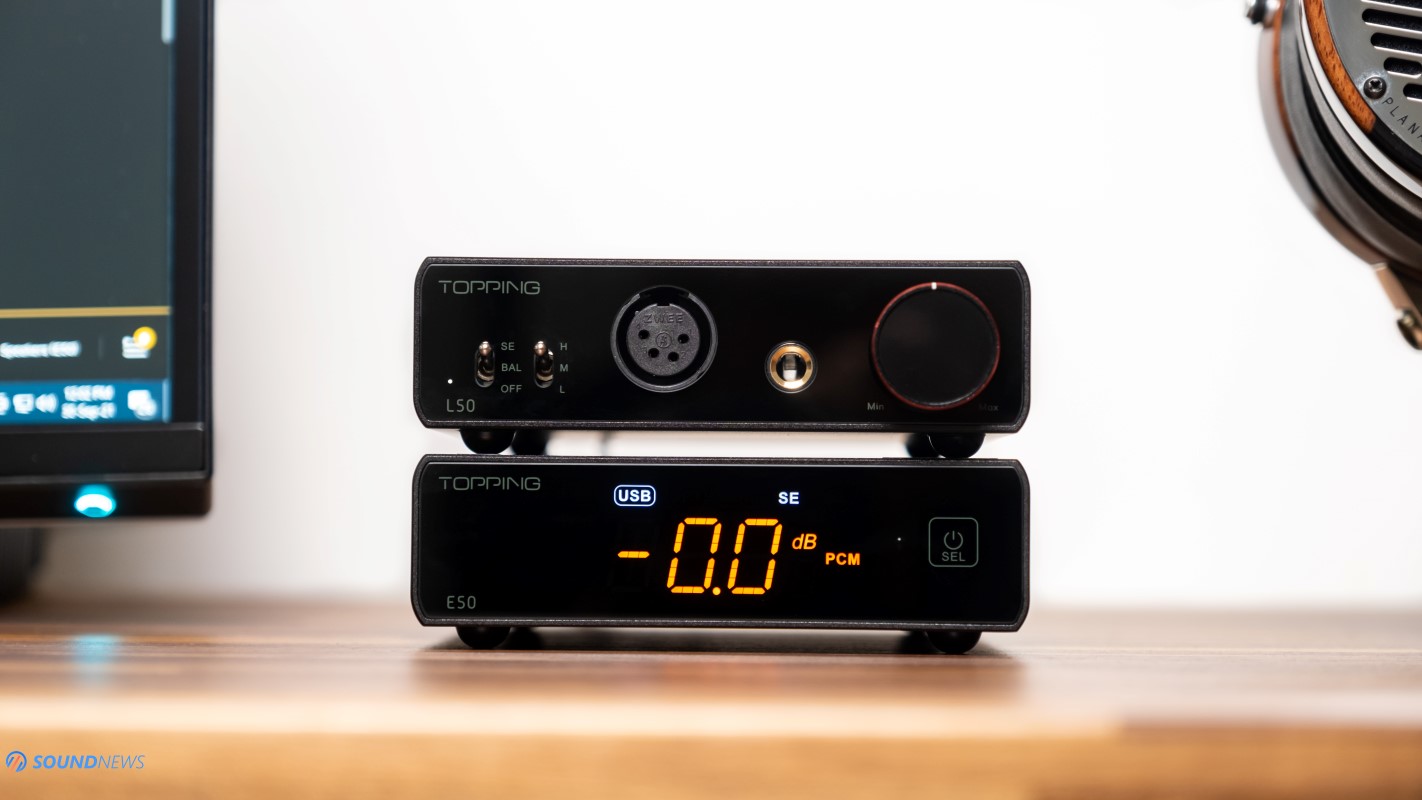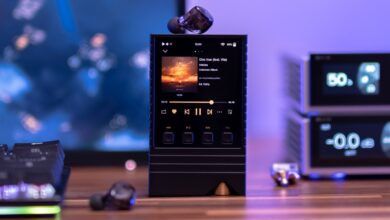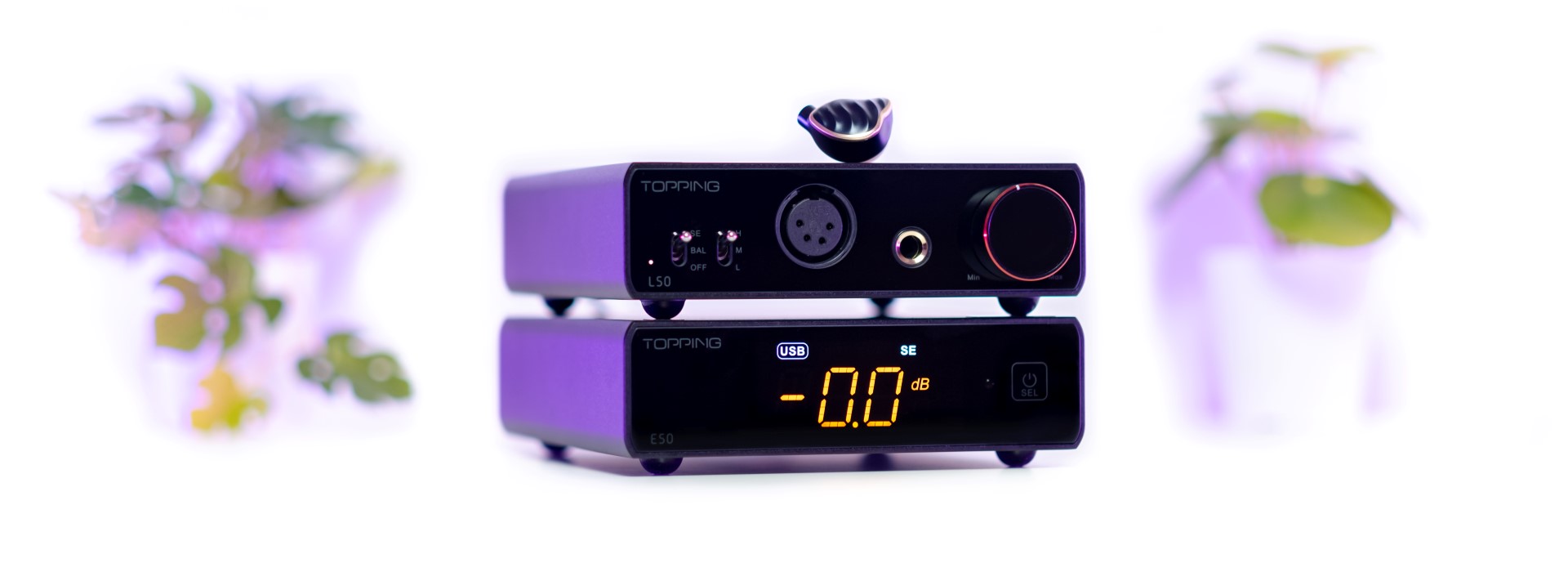
My Video Review:
Hey folks. Another month is passing by and that’s music to my ears as finally, my seasonal allergy would fade away, but for the audiophile community around the world that resonates with one thing only: Topping is going to announce brand new products. Before you start lighting your torches and sharpening your pitchforks, Topping isn’t doing that on purpose, as again AKM’s factory fire left a dirty mark on everything related to digital audio, we felt broken-hearted and audio engineers around the world dismayed as there aren’t alternatives for that velvety sound goodness. AKM announced that their renowned AK4497 and 4499 reached end-of-life status, including lower tiered chipsets as AK4493 are no longer found on the biggest e-commerce platforms as Mouser and Farnell.

Long story short, Topping is going to update all their AKM equipped converters with different silicon and that’s why E30 is being replaced with a higher tiered, fully balanced unit that is called E50. AKM’s are gone, Sabre’s are in, a full MQA decoder hopped on board, distortion went lower and dynamic range went higher, all for a minor price increase to $269.
In usual Topping fashion, a matching headphone amplifier was mandatory, so L30 was updated to a higher rank, adding on top a 4-pin balanced output and doubling its power at higher impedance. L50 complementary headphone amplifier was revealed and it goes for as little as $229. Could Topping deliver a better performance with an incremental price increase or are they doomed to fail? Let’s find that out together!

Unboxing & Package Contents
Both units came in the standard white boxes that Toping uses for their small and affordable units. Double boxed is the usual affair, using plenty of black foam for protection during shipping. As usual, they used every square inch at maximum and besides the units themselves, you’ll find an external power supply for the L50 amp – which is about as heavy as the amp itself, plus a small headphone adapter. E50 doesn’t come with an external power supply, just with a simple USB Type-B to DC cable, so you can power it with your smartphone charger or with your PC/Mac/Laptop/Tablet’s USB ports. There’s a good old Topping RC-15A remote control that’s bundled with every Topping DAC and a USB Type-B cable.
In usual Topping fashion, they’ve added detailed measurements for both units, made by one of the best Audio Analyzers out there. You’ll find their FR, THD Ratio, FFT Spectrum, measurements for E50 digital filters, SNR and dynamic range. I have a huge respect for companies that are publishing actual measurements in detriment of some lousy marketing snake oil. Finally, there’s a warranty card that doubles as a product catalogue and that is pretty much it.
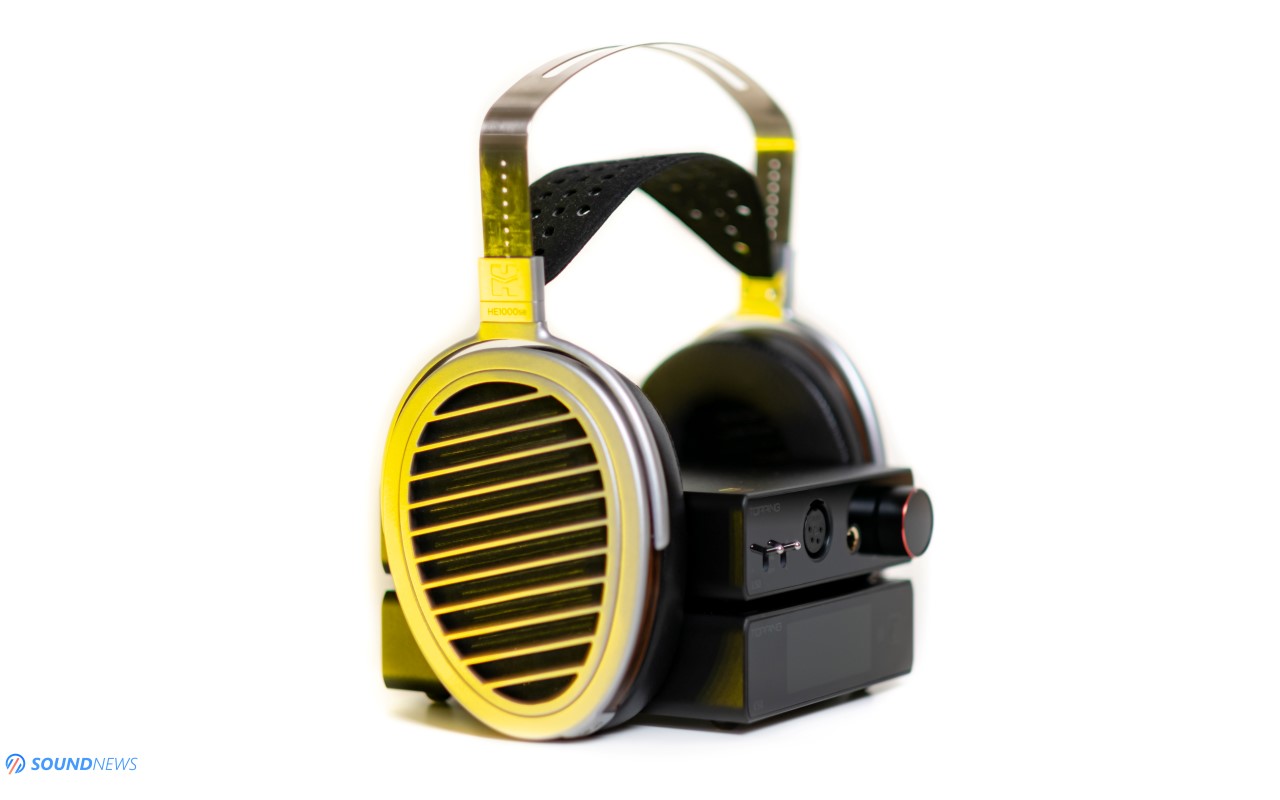
Design & Build Quality
Simply put, L50 and E50 are following the same footprints paved by their predecessors, borrowing design cues from the L30 and E30 units. Topping used similar aluminum enclosures, you can spot the same rubber feet underneath them, the same front panels that are protected by a layer of glass. They are slightly longer, wider and heavier now and that is perfectly fine, since both units are more advanced to their predecessors. The only thing I dislike about E50 is that it doesn’t come with a volume wheel or volume buttons, so I’m glued to its remote when I want to use it as a DAC + Preamplifier.
Topping is offering four color options: silver, black, blue or red. In either case it’s a high grain matte-color that will protect them against accidental drops or scratches. I’ve got matte-black units and if I’m dimming E50’s display, it scores a huge WAF! As with their predecessors, their glass panels seem to be unified with the rest of the case, there aren’t any visible screws, moving them on their backs for a clean and minimalist look.
Overall, I find them handsome, simple, yet quite modern looking, having just the right size to be used in small Hi-Fi setups. You can hide the E50 DAC behind you TV for some movie action, under your monitor or you can carry them to your office and back home.
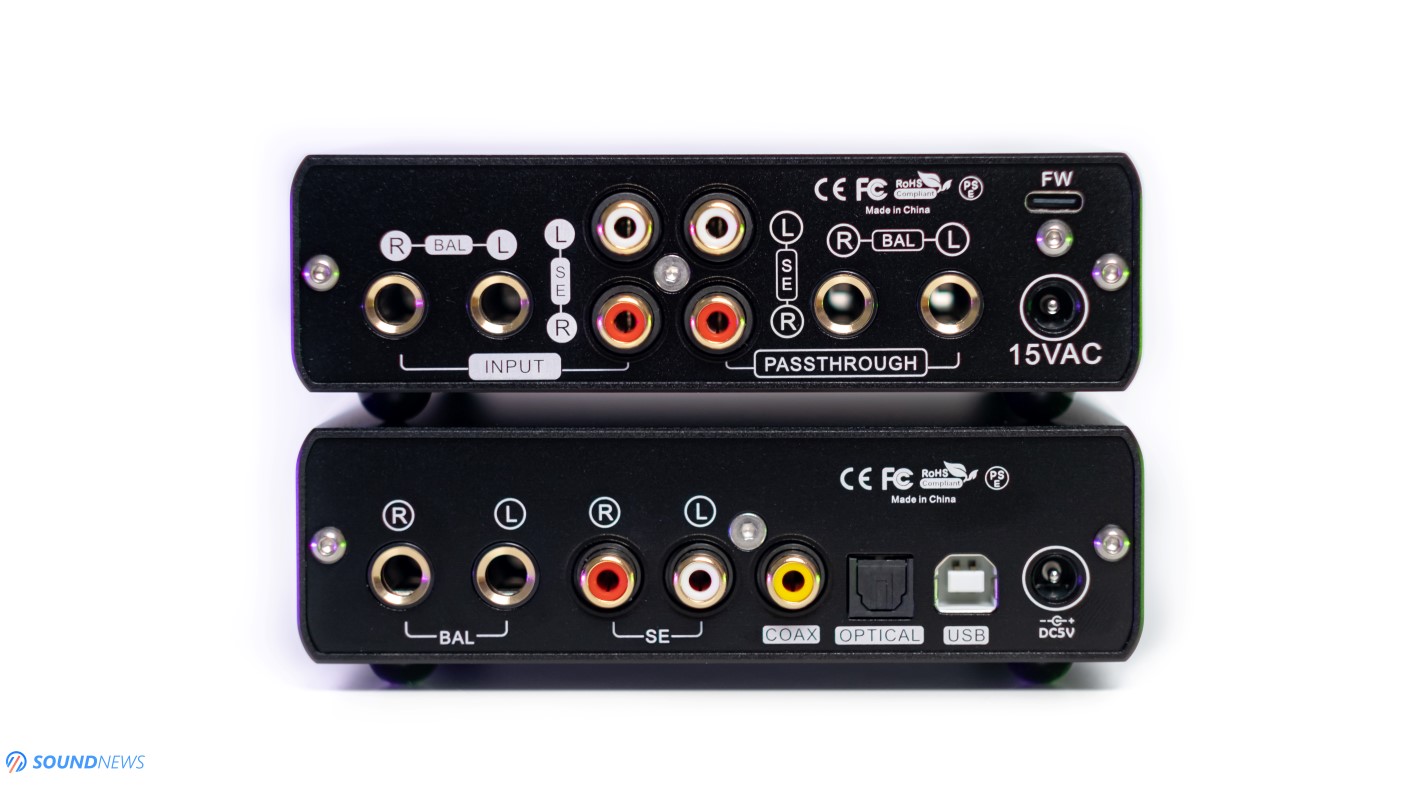
Controls & I/O
This is where Topping put their bright minds to work, making them fully balanced input to output, unlike their predecessor that were single-ended only. L50 amp reminds about old-school amplifiers thanks to its heavy-duty mechanical switches on its front plate. With them, you will be turning it On and Off, select the BAL or SE inputs and choose between three gain settings. Since it’s a fully balanced amp, you’ll find a 4-pin XLR output and a regular 6.35mm headphone jack. Limited by the surface area of its back panel, XLR jacks were out of the question, so they went with much smaller 6.35mm TRS connectors and with usual RCA inputs. If you are getting the L50 and E50 stack, I strongly recommend getting the Topping TCT1 TRS to TRS balanced interconnects for the best results. If you wish, you can passthrough DAC’s signal to another amplifier with L50’s TRS and RCA outputs. For the first time in Topping’s portfolio, I’m spotting a USB Type-C port on the amp, that will be used for future firmware update and that’s pretty cool.
With E50, Topping kept a much clearer face plate, you’ll spot a decently sized display in the middle and a single On/Off button that can work as an input selector. If you want to unleash its full potential, you’ll need its remote control that will increase or decrease its volume, dim its display, change filter settings, mute it and offer some additional features. On its back you’ll find the same balanced TRS and RCA outputs, plus three digital inputs as Coaxial, Optical and USB. It needs only 5V DC and you’ll need to supply your own charger for it to work, I’m my case I’m powering it with an USB port from my PC.
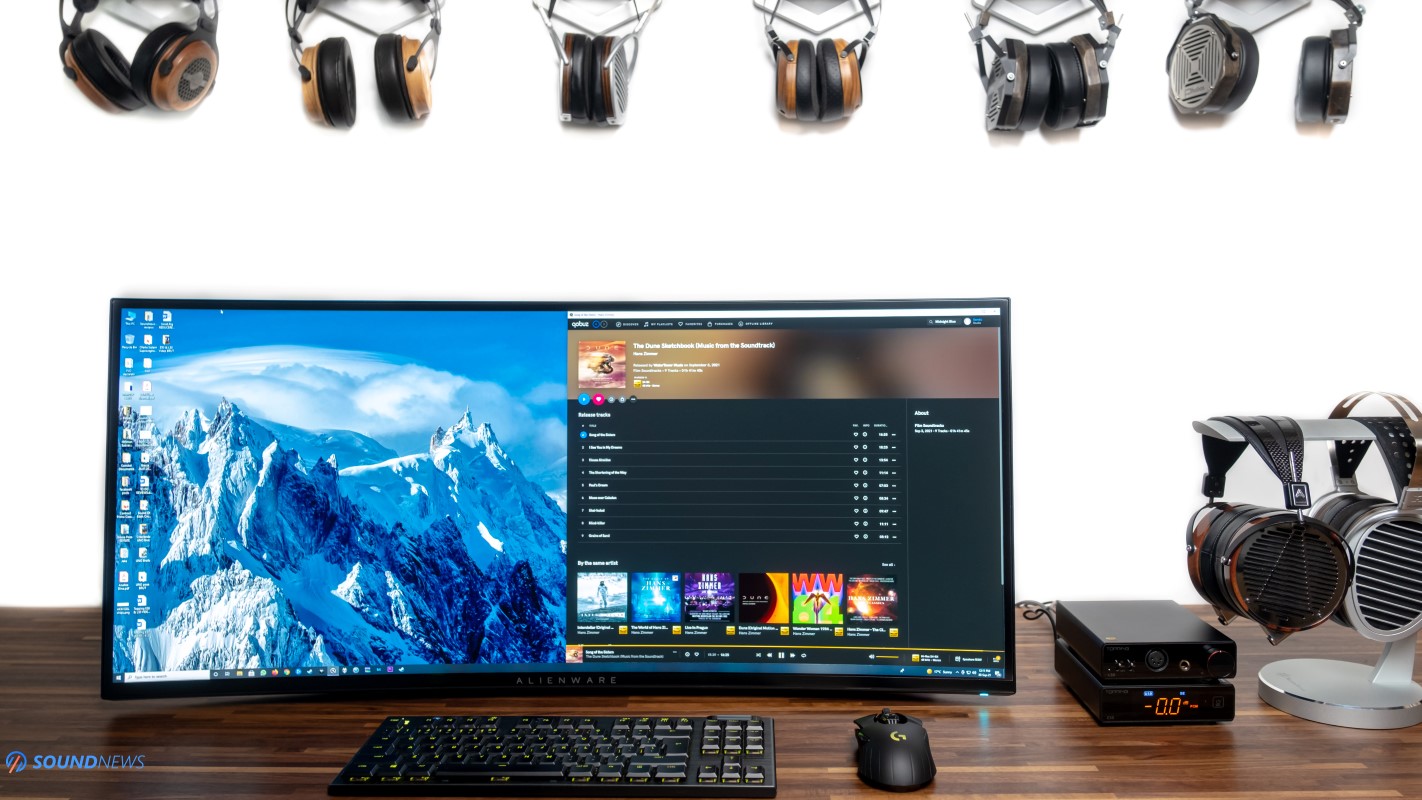
Tech Inside E50 & L50
Since digital to analog converters are slightly more interesting to me, I’ll start with the E50. Topping went the latest ES9068AS 4-channel DAC chip of ESS Technologies that incorporates a full blown MQA decoder in the same silicon. It means that additional electronics are no longer needed to fully unfold and decode MQA content. This way the signal path will remain as short as possible and it should lock on those files instantly. So far, this is the first ES9068 equipped Topping DAC.
ES9068 is a current output DAC chip, meaning that a current to voltage conversion (I/V) stage needs to be built around it. Thankfully, Topping went with smooth and natural sounding OPA1612 op-amps, instead of LME op-amps that were sitting in their older devices. OPA’s are better suited for ESS implementations and is seems that Topping is already going on the right path. I’m glad that Topping used all 4 channels of this particular DAC chip, meaning that E50 is indeed a true balanced DAC.
They went with the nicest XMOS chipset that you can spot in some of the best delta-sigma DACs of today. XU-216 (2000 Mips) is in place and it’s the recommended chipset for MQA, Hi-Res PCM and DSD playback. Besides fully unfolding MQA files via USB, it can accept MQA content via Coaxial and Optical, where it will work only as a MQA renderer.
Before I tell you more about the L50 amplifier, I want to draw your attention on that enormous external power brick, I’ve had a gut feeling and I’m glad that I followed it. It’s way too heavy; it doesn’t look like a cheap switching mode power supply to me. I’ve opened it up and a huge surprise was waiting for me in there! A laminated core, single phase transformer was sitting in there and that makes me extremely happy. I can’t stand switching mode power supplies in amplifier designs, they work well in most DACs, but they can limit dynamics and transient response in amplifier designs.
Moving on to the unit itself, the DC power that is already passively conditioned, goes through additional cleaning stages with the help of voltage regulators and filtering caps. Probably the most important thing to know is that L50 uses absolutely the same Nested Feedback Composite Amplifier (NFCA) modules that are powering plenty of Topping amplifiers by now. As I have explained before, it exhibits a higher gain, higher slew rates and much lower distortion. A composite op-amp is placed at the input and output of another op-amp, in this case Topping used the famous TPA6120A2 that you cand find in plenty of amplifiers of today (Hey iFi Audio!) The composite op-amp is enhancing the performance of TPA6120A2 with the help of negative feedback. The good part is that a circuit like this brings the best of both worlds with excellent DC and AC characteristics, the feedback loop will also remove noise within the circuit but the bad part is that feedback loop reduces the overall gain of the circuit, weakening the signal at the output. I don’t know how Topping dealt with the overall gain and power output, because clearly L50 is not lacking at all in terms of power output and gain. While on paper L50 has the same power output of 3.5 Watts in 16 Ohms as L30 does, at a much higher impedance L50 takes the lead, offering twice as much power at 300 Ohms. While L30 worked great with low-impedance desktop headphones, L50 should work with them all, including with ultra-high impedance ones, making it a highly desirable amplifier. With an output impedance of 0.1 Ohms, damping factor seems to be fully preserved and with a maximum noise floor of just 1.1 uV on high-gain, you can drive even high-sensitivity IEMs without hearing disturbing noises. In the end, Topping swapped unobtanium velvety sounding AKM silicon with dead-neutral ESS-Sabre goodness, while doubling the output power with high-impedance headphones.
All looks cool and dandy, but how are they performing stacked on top of each other? That’s the big question that I’ll try to answer today so, let’s hit some eardrums!
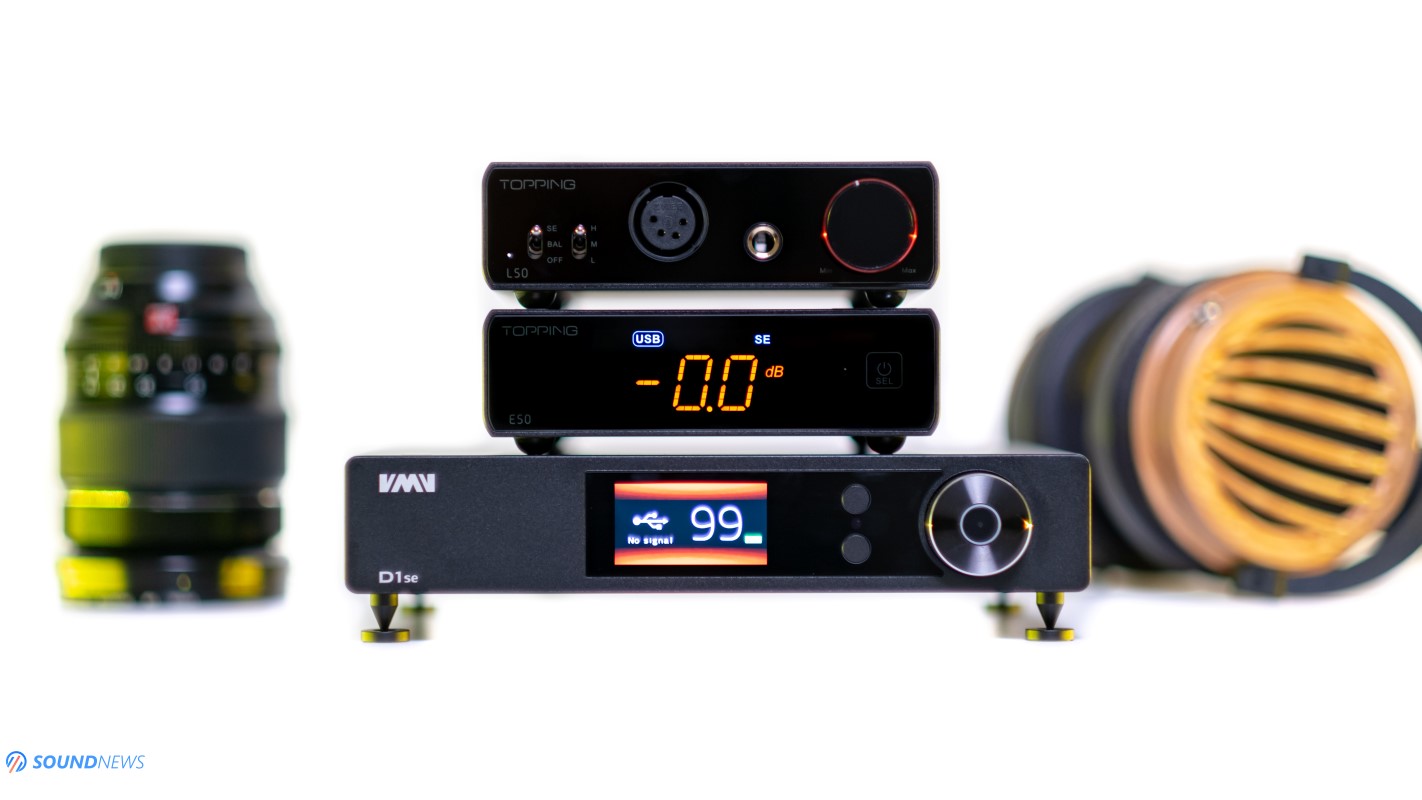
Sound Performance
I. Preliminary Sound Impressions
If somebody would blindfold me, put this combo in front of me, engage my usual playlist and swap between three or four headphones that I’m using on a daily basis, then I would go with a wild guess that I’m listening to their D90SE connected to the A90 amplifier. Sure, I’m getting less volume on tap, there is a smaller headroom remaining, L50 can’t possibly drive the heaviest loads out there and I’m getting a close to zero physical resistance on that volume wheel – which I don’t enjoy that much. However, when it comes to technicalities as detail retrieval, transparency, speed, decay, bass authority, stage size, tonality and what not…. then there is hardly a difference whatsoever. Sure, with pricier Topping units you are getting slightly nicer specs, more inputs and outputs, more features, nicer components and a better build quality, but sound wise I’m getting a really hard time discerning which is which. E50 with L50 combined will cost you almost ~$500, which nets you incredible dynamics, world-class levels of detail-retrieval, inaudible noise levels, plenty of power for low-sensitivity planars and high-impedance dynamic headphones, you are getting a see-through transparency, an extended and straight as a line frequency response. You are truly getting a world-class performance at such an affordable price point. Topping kept pushing themselves over and over again and they did that so well, that their pricier units are no longer so interesting for people that are hunting for the best bang for their buck. My allergy slowly fades away and I started feeling better, I don’t know if that has to do with what I’m going to write next, but undeniably I’m dealing with some crazy levels of performance. Besides their linear and dead-neutral approach to music reproduction, I really cannot fault any of them, as I find their tonality similar to their best offerings. I remember getting plenty of noise with E30 when it was drawing power from my PC, solving that issue with an external power bank, but E50 doesn’t have that problem anymore. Topping added additional filtering stages, so it works equally well with USB ports, smartphone chargers and anything else. In the very first hours of use, E50 had a troublesome top-end delivery, especially with Hifiman headphones, something just wasn’t clicking into place, but a day later, I’m with HE100SE on my head and I’m no longer experiencing a treble itch or listening fatigue.
What’s more interesting is that, I don’t have at my disposal TRS to TRS balanced interconnect cables, so I’ve used RCA interconnects and I was still mighty impressed. Leaving them play for a night with a Qobuz playlist on repeat, E50 and L50 sound like proper Hi-Fi equipment that should normally cost twice or three times as much. The amount of detail retrieval that is coming from both units is mind-boggling, everything seems clean, transparent, there is no veil between my headphones and my music, everything goes in and out in a split second, there is definitely as much speed as I want. The only things that weren’t so impressive to me were bass slam and stage width. It was above decent in both cases, but it can’t possibly surpass say a proper class-A amplifier that puts you between the hammer and the anvil when bass notes are going down. I clearly remember L30 struggling with difficult loads as Audeze LCD-4 that I was using as my daily drivers a year ago, it couldn’t drive them, heavily limiting their dynamics and offering little to no headroom. With L50, that is no longer the case as every over-ear, IEM, dynamic or planar-magnetic headphone were driven well with the exception of Hifiman Susvara, that still demands more power for a punchy low-end delivery.
That’s a hell of a first impressions, but let’s move on to the next chapters and see how they stack up.
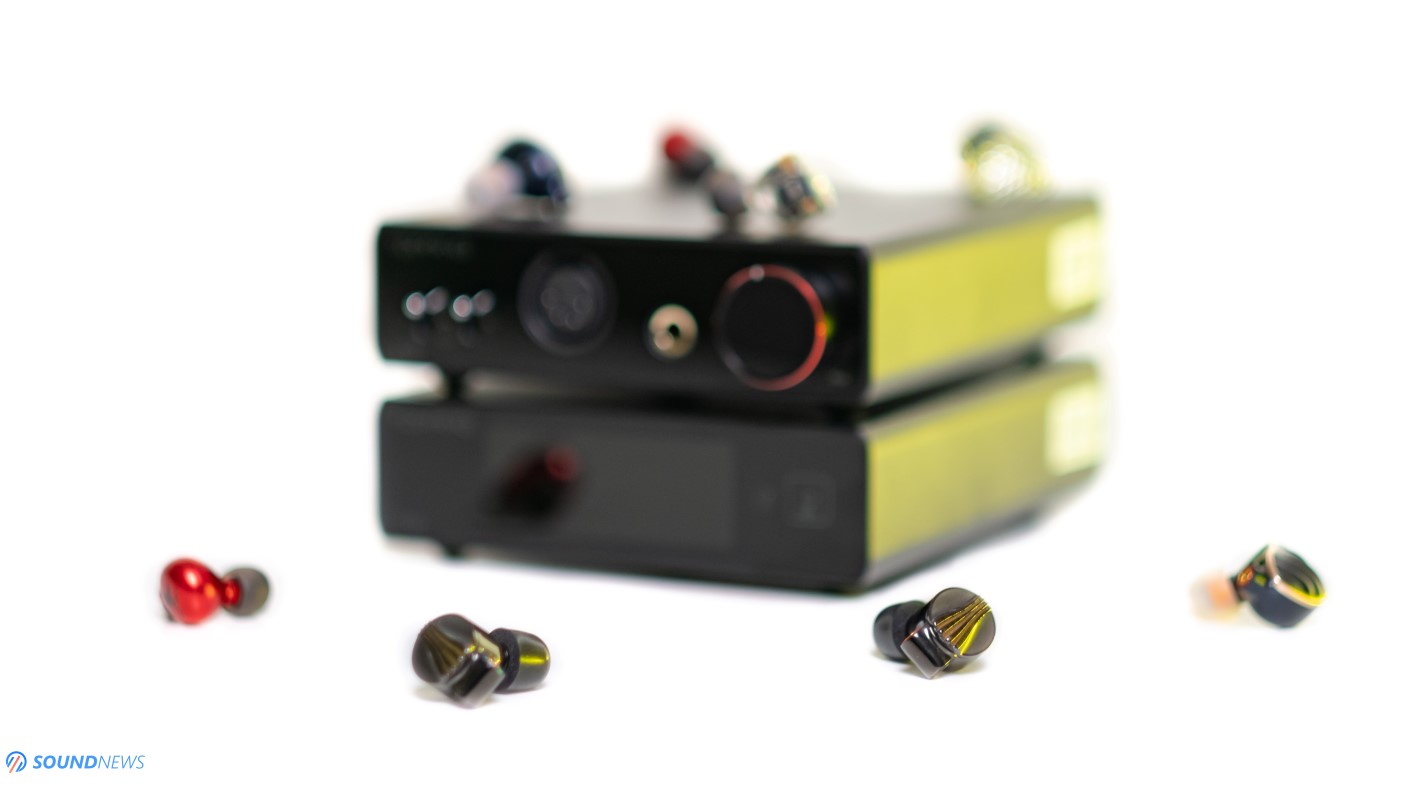
II. Noise Floor
In terms of noise floor, I’m getting a strong feeling that I’ve listened to L50 previously, over and over again. Oh, wait! That is because it sounds exactly like all Topping NFCA amplifiers that I’ve tested before it. L30, A30 PRO, A50S and A90 are all relying on negative feedback that is killing the noise for good and all of them were dead-silent even with the most sensitive loads. Topping measured its noise floor at 1.1 micro-Volts on high gain and 0.7 micro-Volts on low and mid-gain. However, their APx555 Audio Analyzer is adding a bit of noise on its own, so in reality L50’s noise floor sits below those numbers. This is a world-class performance and I’m putting it in the same boat with units like Topping A90, Sparkos Labs Aries and Benchmark HPA4.
All those things combined are telling me one thing: L50 is noiseless even at maximum power and the only limiting factor is our hearing ability and not the gear that I am testing today
As you can imagine, be it FiiO FD7, Hiby Crystal Six or Meze Rai Penta, I couldn’t detect any type of noise, even on balanced out and high-gain. I’ve experienced an absolute silence and, in this regard, it worked better than many non-NFCA amplifiers. There is no residual noise at any volume level, it offered a pitch-black background and a noiseless performance with all my IEMs. Gremlins weren’t dancing around, nasty noises, hisses and hums were nowhere to be spotted. I used low-gain with sensitive loads only because I had a longer travel on the volume wheel, apart from that high-gain is also usable with such easy loads. I was sitting somewhere between 1 and 2 O’clock and if you are one of those low-level listeners, you can certainly do that on the L50. Bottom line is that L50 is an impressive IEM friendly amplifier and I don’t see a point of buying a pricier amp for your IEM collection. With a close to zero output impedance and inaudible noise floor, you will be testing the limits of your IEMs. There is only a small nitpick with the E50: at the lowest volume level, some music is leaking and you can still hear it, not a biggie, but it needs to be mentioned.
Moving on to the E50 DAC, Topping further optimized its noise rejection technique, so you can forget about noise crawling through its DC or digital inputs. Its precursor E30 wasn’t that great with USB ports of my PC, my IEMs picked residual noises immediately, but luckily E50 doesn’t have those issues anymore. Putting it in my loudspeaker setup, adding the PRE90 or HPA4 and then an AHB2 power amplifier didn’t add grayness or hiss into the mix. KEF’s UNI-Q drivers were absolutely dead silent even after approaching them closely. Adding a cell phone on top of it, didn’t add hum/hiss and all I’ve heard was a clean, undistorted sound that didn’t stay in front of the musical signal and no matter if I would be using headphones or speakers, I knew that I can always rely on its clean and noiseless performance.
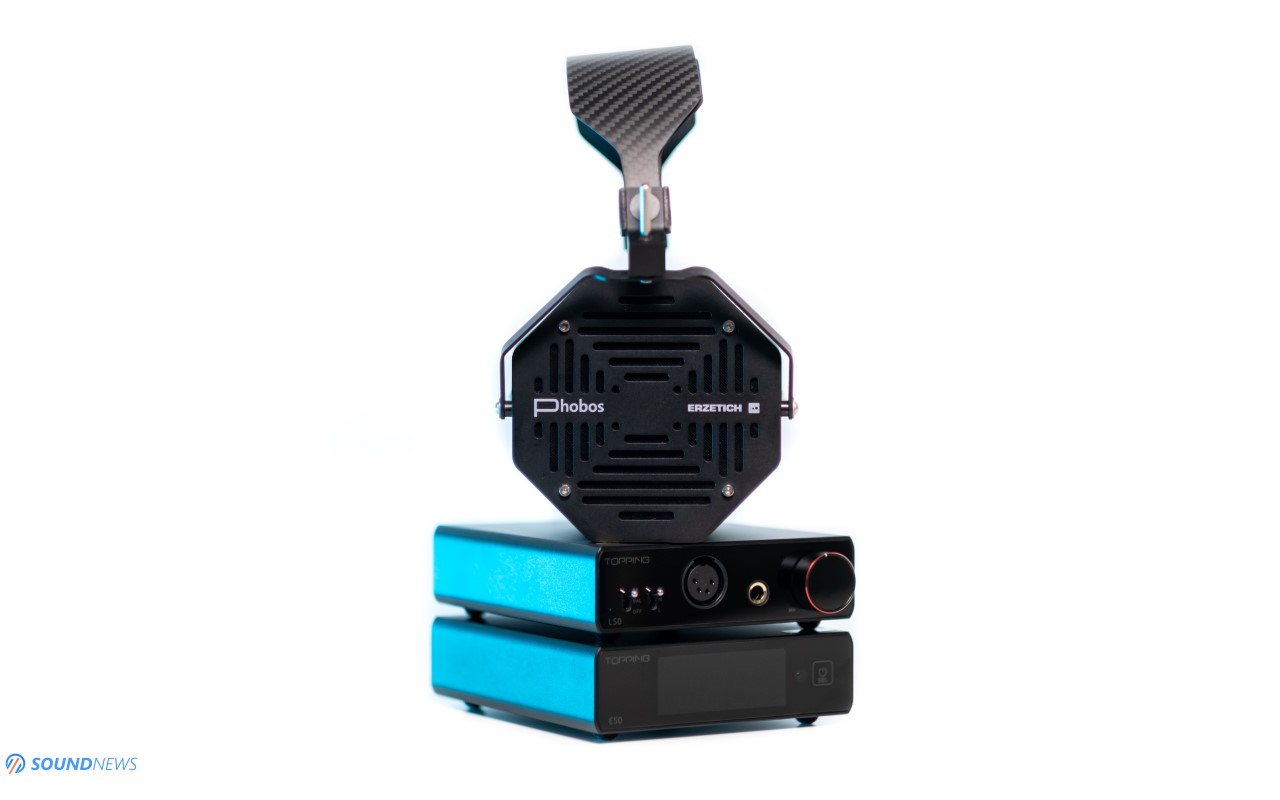
III. Resolution & Transparency
Combine their noiseless performance, with the cleanness of well-implemented ESS-Sabre chipsets, with transparency and dynamic range of NFCA modules and you are getting the sound of E50 and L50 stack, that are costing together as little as a decent pair of IEMs. Their top-of-the-line D90SE DAC still had a tiny bit more information popping here and there, it was showing a higher resolution, it felt extremely resolving with top reference recordings, it felt above the E50. However, if I would use usual 16-bit PCM files that are making ~95% of my music collection, then I could hardly tell which is clearer and more resolving and that makes E50 an absolute steal of a DAC. A few years ago, a performance like that would cost you an arm and a leg, but things changed impressively fast and I can’t imagine what it is going to happen in the following years. I guess it’s about time Audio Precision closes their doors and start working on better audio analyzers, as affordable units like E50 and L50 are already challenging the best measurement equipment out there. In my view, E50 DAC sounded impressively clean, but never going overboard with its sharpness. It had a good linearity, meaning that it wasn’t clinical or plain boring in long listening session. I could easily focus on the smallest nuances with headphones like Hifiman HE1000SE and all that felt like a child’s play for it.
Moving on to the L50 amplifier, I will just remind that before Topping created their NFCA modules, the cleanest and most detailed headphone amplifier was (and still is) Benchmark HPA4 that ruled supreme for at least two years, never challenged by anyone, until Topping dropped their A90 amp like a bomb, proving that world-class levels of performance can be achieved with as little as $500. A90 sounded so clean, that I almost couldn’t differentiate it from my own HPA4 and I can say the same about the L50. The amp that is being discussed today is the pure definition of detail retrieval & transparency and there is no point in offering you several examples as I would be arriving at the same conclusion. As its companion DAC, L50 is an achromatic sounding amplifier, choosing absolute linearity and frequency response extension. With it, nothing really stands out and yet everything is exactly where it should belong. At first, it might appear as uninteresting sounding, but as times passes by, you’ll start appreciating its honest and unaltered approach to music reproduction. If you want, you can still add some color with different sounding headphones or for a much different flavor, you can add a tube amplifier into the mix. In the end, both units appeared clean, undistorted and detailed sounding to me, without becoming clinical or soulless sounding.
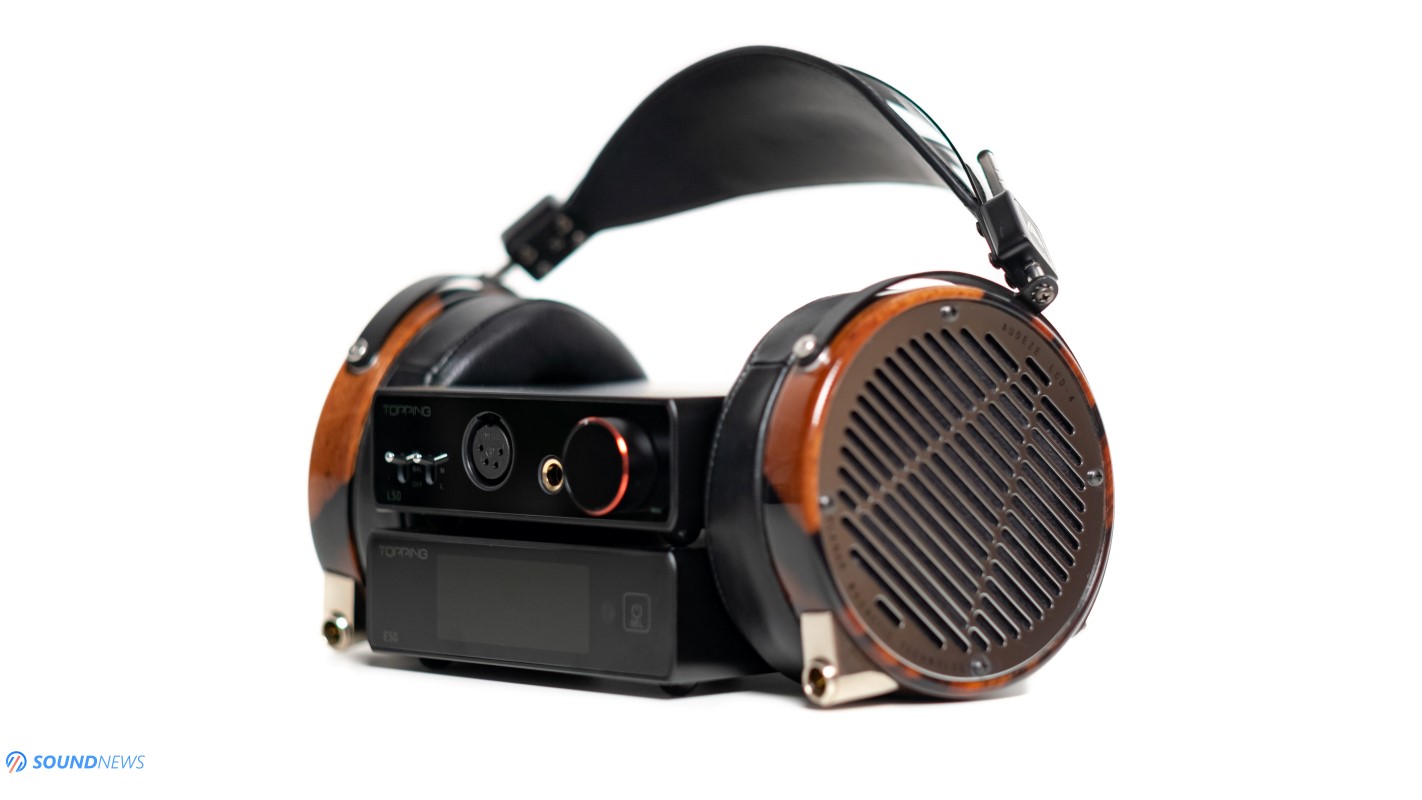
IV. Power Output of L50
This will be a short one and it goes like this. L50 drove the Audeze LCD-4 and Hifiman HE1000SE close to their maximum potential. Only close, because L50 wasn’t sounding big and enveloping, it provided a decent headroom for higher and lower dynamics and there are still harder slamming headphone amplifiers out there. Apart from that, my normal listening volume would sit in between 1 and 2 O’clock on high-gain with the LCD-4, maximum volume being 5 O’clock. I had all the signs of a nicely driven headphone, they went fast, music decayed naturally, bass notes weren’t lingering much, impact was quite good, slam was just okay and dynamics felt above decent. Any other headphone worked even better, never limiting their dynamics as it provided a much bigger headroom. Sendy Peacock sounded outstanding and the same can be said about Erzetich Phobos 2021 and Hifiman HE100SE. Hifiman Susvara refused to sing some beautiful songs to me, it was shy and polite, bass was thin and lifeless and most importantly, I didn’t have as much volume for my rock and electronica music. It clearly works considerably better to its precursor L30, that couldn’t move the LCD-4 to very loud levels.
While 3.5 Watts is 16 Ohms doesn’t sound like it’s over 9000 (over-powerful), it sounded impressive with most of my headphones, providing enough current and voltage gain, unleashing a higher engagement factor compared to its predecessor. It provided good dynamics, headphone drivers felt tightly controlled, all while sounding fast and nimble. As long as you don’t pair it with bright sounding headphones, L50 would deliver clean undistorted power to your precious headphones and that’s all you need to know.
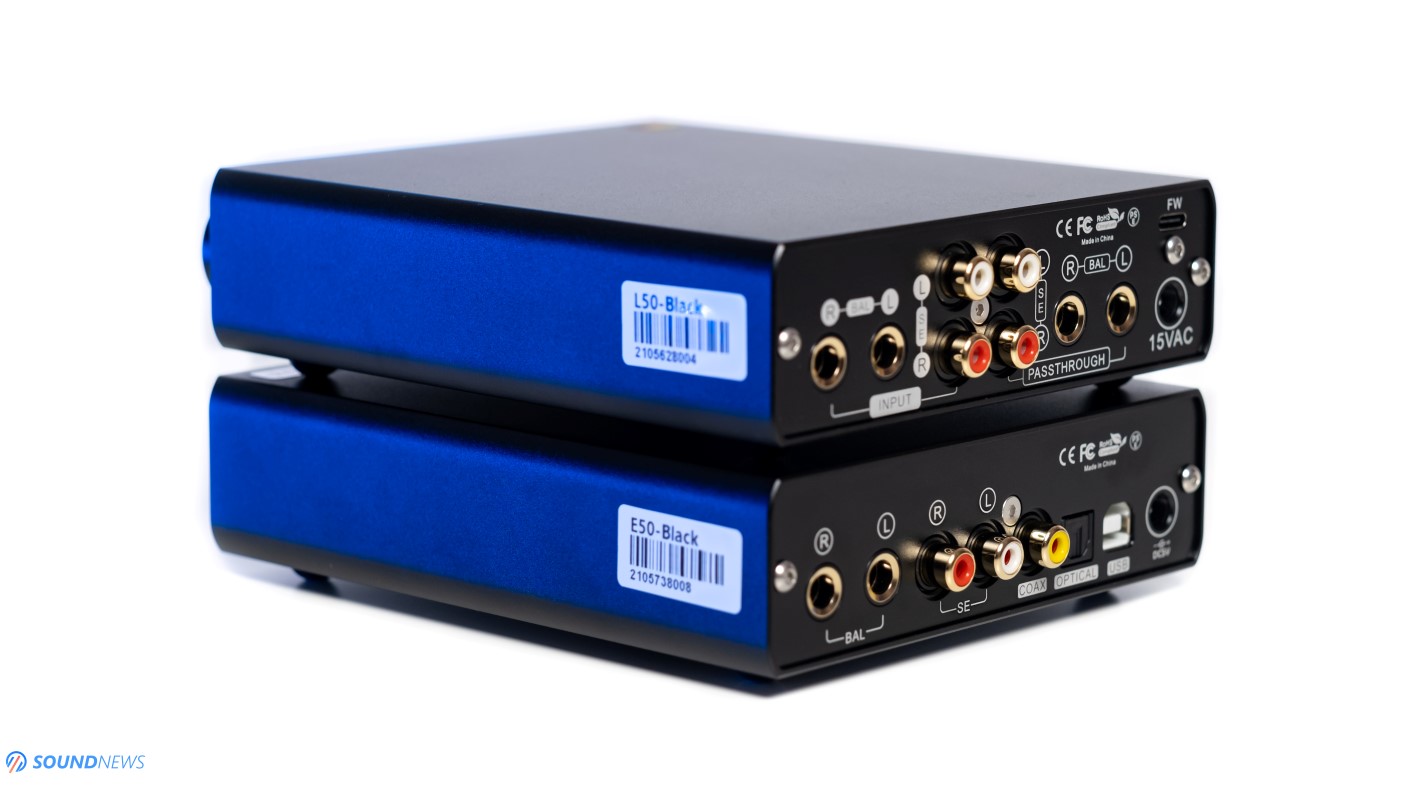
V. Transient Response
Generally speaking, all ESS-Sabre DACs and all NFCA amplifiers of Topping are regarded as extremely fast sounding, having shorter decays against transistor or tube-based amplifiers and that was certainly the case in here. Both units will easily keep up with modern music, double drums sounded defined, textured and close to the real thing. Contours were sharp, leading edges crystal clear, bonding musical notes and adding a much-needed liquidity, like I was listening to DSD material all along. L50’s close to zero output impedance fully preserved its damping factor and its wide-bandwidth design never limited its power output and you can be sure that nothing would be stopping this wild horse. Decay of the notes felt lightning quick and sometimes I desired for a longer vibration with string-based instruments, as everything just happened in split seconds with sounds going in and out instantaneously.
As days passed by, I started to understand that something was missing, something wasn’t that impressive, my upper-class planars didn’t sound as I know them on top-class equipment. Especially Audeze LCD-4 were slightly pressing the brakes in terms of dynamics and bass slam. L50 wouldn’t pound with an incredibly force and will never put you in between the hammer and the anvil. My electronica sounded like I’ve traded those nasty LCD-4 with a gentler sounding LCD-3. Bass notes didn’t have as much authority down low, I felt them ethereal and lightweight in their presentation and that’s why Topping still sells A30 PRO and A90 that are sounding more impressive down low with harder to drive headphones. The above-mentioned amplifiers were never limiting the LCD-4, HE1000SE and I would recommend getting those if you plan on collecting headphones as I do. On the plus side, I find L50 slightly more organic and toe-tapping to entry level THX-AAA and PLFC designs of SMSL and I want to be clear that if your headphones are fully driven and plenty of volume remains on tap, then L50 would behave much nicer when bass notes are coming, delivering a nicer impact down-low.
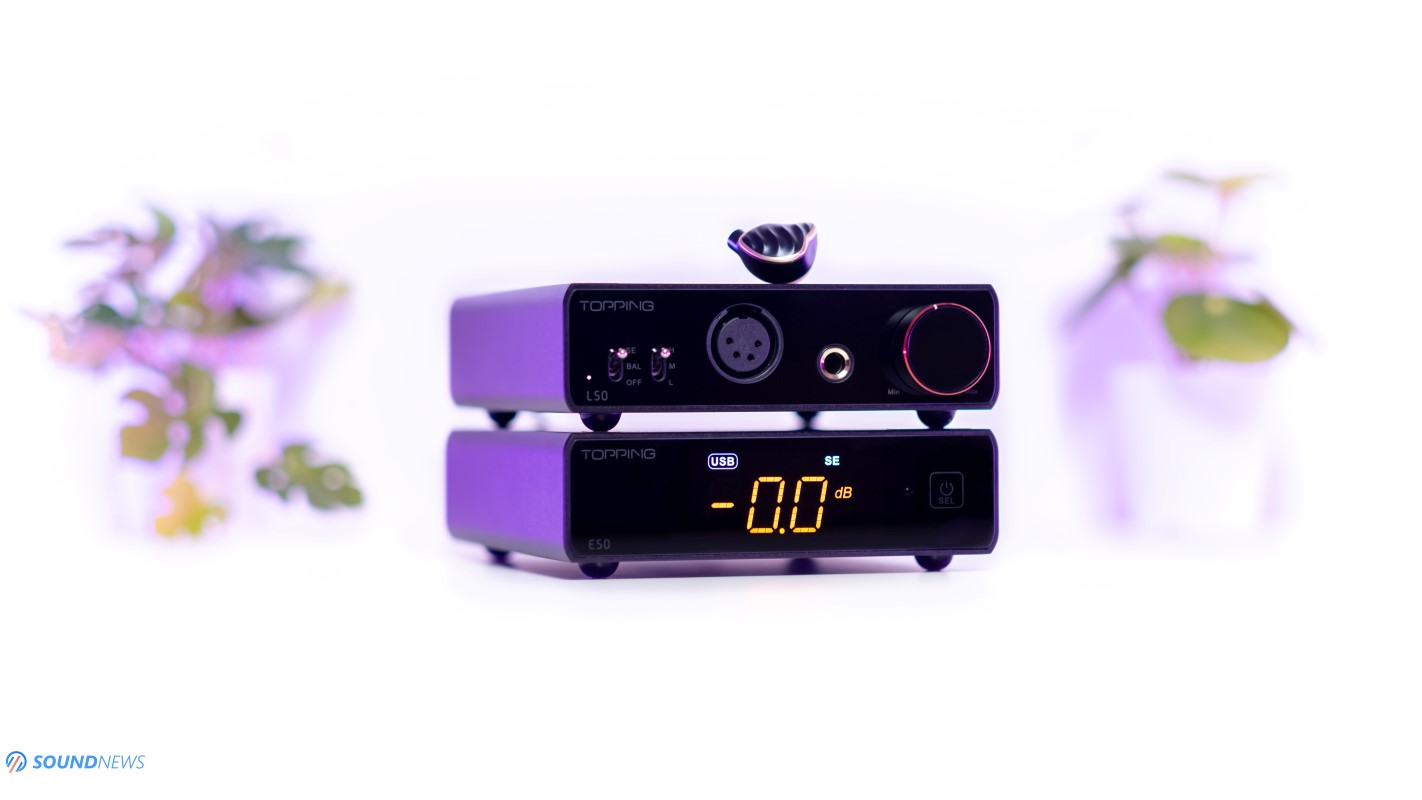
VI. Soundstage & Depth
Besides a limited headroom and a weaker bass slam that I’ve experienced with difficult loads, the left to right soundstage did also take a hit and let me explain you why. If I would use a balanced TRS to TRS interconnect cable, then I would be unleashing the maximum potential of both units, increasing the left to right soundstage as I’ve experienced many times before. With a single-ended connection as RCA, E50 is increasing the channel crosstalk by around ~10 dB, decreasing the void space between the most far right and far left sound.
It’s safe to say that a smaller soundstage that I have experienced has nothing to do with the amp itself (well, maybe just a little), but with the DAC that feeds it. Naturally, I’m dramatizing a little, but the smaller stage size is definitely there when I’m putting open-back headphones on my head. The final result is a medium-sized soundstage that still contains plenty of depth information and I can still wander around my tunes with a nicer pair of headphones. This combo delivered a decent amount of air in my music, never enhancing the stage size as it might happen with a few oversized class-A amplifiers or tube-based units. I could still pin point the location of the notes, it still added some air in between the notes and sometimes pushed all that music outside my head. Coming from a Flux Labs Volot or Burson Soloist 3X, it feels like I’m getting an intimate, close and personal experience, that felt great with live and acoustic music, but not that great with modern rock & jazz. If you would like to experience something bigger sounding, that stretches wider that stage, then please check their D30 PRO and A30 PRO combo. In their defense, most entry to mid-level achromatic headphone amps that had THX-AAA and PLFC modules behaved pretty much the same. While negative feedback destroys noise floor for good, it sacrifices nerve, bad attitude and openness.

VII. Frequency Response
When it comes to simple things as frequency response, then I believe that both units are holding their hands together, going into the same direction. I find them ultra-linear, extended from the lowest notes to the highest treble peaks without adding grain or a sharpness filter.
A. Bass
When it comes to bass, from the entire army of NFCA amplifiers, A90 and A30 PRO impressed me the most, followed by L50 and by the rest of the gang. On the other hand, E50 DAC was something else entirely, as I found it close to their top-dog D90SE, never limiting the low-end delivery in any way. Compared to E30 and L30, you’ll feel more presence down low, a little bit more texture and weight. Both are offering a fast and a detailed type of bass, that is layered and sometimes effortless sounding. In my view, E50 is a big departure from E30 in terms of bass quantity and quality. Even with simplest tracks as jazz and blues, I was quite surprised by how much low-end E50 was showing in my tunes. There is some flow and easiness appearing in acoustic tracks, but not a lot of boldness and that is the only nitpick I have with them.
B. Midrange
Topping balanced well that sharp sounding ESS silicon, adding some organic matter and liquidity with the help of bipolar operational amplifiers of Texas Instruments. While, E50 isn’t a simple replacement to the E30, it doesn’t sound exactly as smooth, as mellow and musical, Topping made sure that some of those traits would carry over to E50. L50 on the other hand is pretty much indistinguishable to the rest of its family, as all NFCA amplifiers carried a neutral tonality, never raising or dropping the midrange by a few dB. You won’t find a lot of warmth, smoothness or a higher density, but you’ll find enough to satisfy a midrange addict. Voices never sounded thin or lifeless, this combo nicely preserved the human pitch and vocal cords vibration. Acoustic music could still awake some emotions and I’ve never felt string-based instruments botched to unrecognizable. Today’s combo can’t possibly emulate the sound of a well-designed transistor or tube-based amplifier, but they are definitely adding some naturalness into the mix. I find them mildly neutral, but never going towards thinness or listening fatigue. If you want more warmth and smoothness, then I would suggest going with their D30 PRO and A30 PRO combo, that added more density and meat on the bone.
C. Treble
Both devices are going for an extended treble delivery even past top-octave. I find their trebles clear, well-defined and textured, they had sharper leading edges to my usual setup, but luckily no listening fatigue crawled inside my headphones. Their trebles felt less aggressive compared to a SMSL SU-8S and SH-8S combo, so I could listen to rock and metal tunes all day long without clenching my teeth. Both rendered bells, cymbals and tambourines with utmost accuracy, I felt their metallic bodies, those were playful and impactful, but never disturbing in late night listening sessions. With all that said, please don’t expect a smooth treble roll-off, there isn’t any of that, just a perfectly flat line up to 20 kHz. If you don’t like your trebles detailed and extended, then you might look elsewhere, as both units are brutally honest in their presentations.
All in all, both units are covering our hearing range in full, extending from the bottom-end to the highest treble peaks, never adding or subtracting anything from the mix.
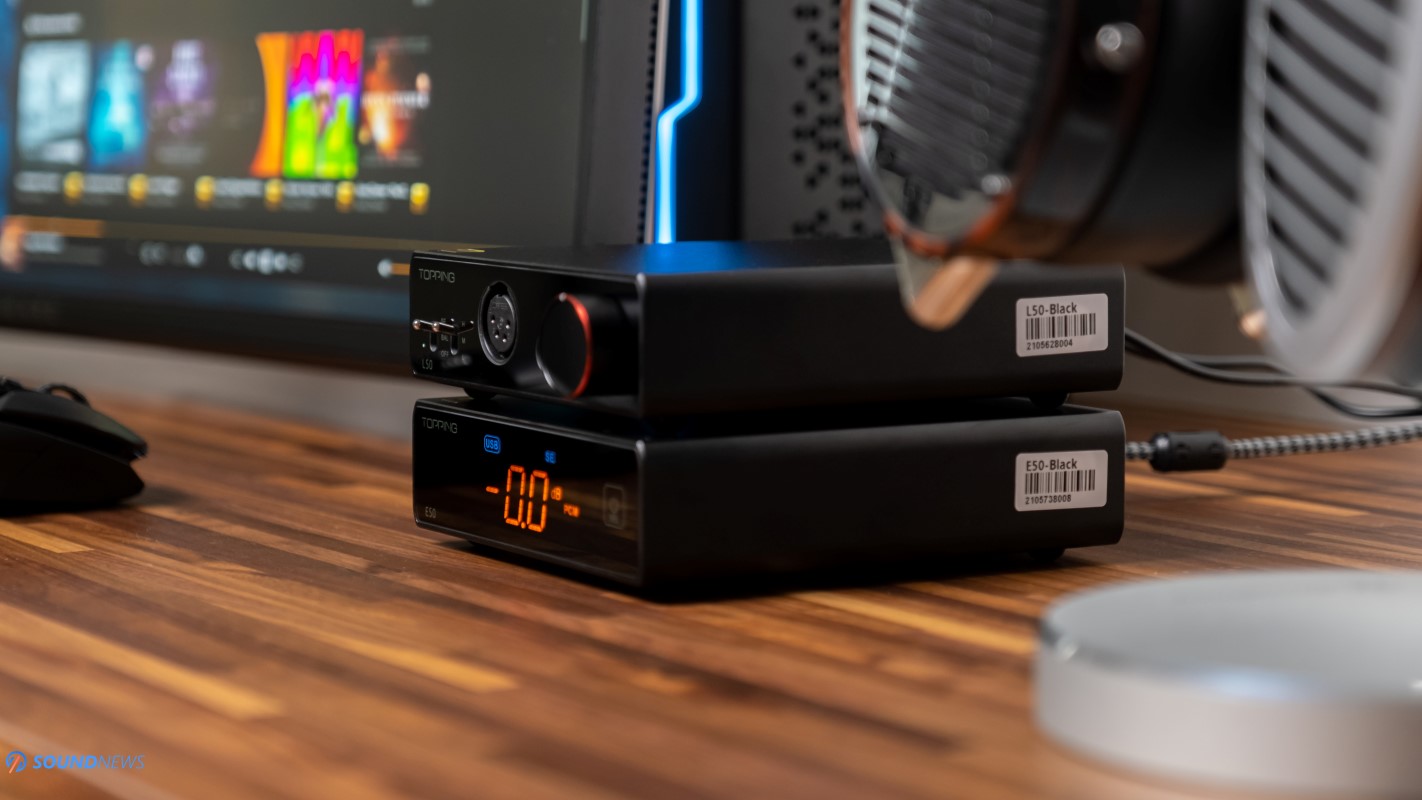
My Conclusions
Once again, Topping proved that top-class performance ca be achieved with as little as $500 combined. They’ve got you fully covered, delivering an abundance of details, fast acceleration and deceleration, a natural decay of the notes, a good old linearity and clean, undistorted power for your growing headphone collection. I was a Biggity-Big fan of their D90SE DAC and A90 headamp and today’s combo reminds a lot about them. I’ve called their predecessor overachievers, putting a good show versus pricier components and I feel absolutely the same about today’s combo. If their top-of-the-line D90SE and A90 are out of your reach, then today’s combo delivers a similar tonality at a very attractive price point, missing just on a few features that might not be as important to you.
Impressive technicalities at very attractive price points resonates with Topping, as they showed so many times now. I liked this combo even more to the newest SMSL SU-8S and SH-8S combo that weren’t transmitting as many emotions, delivery a dead-flat neutrality. Considering their high price-performance ratio, I’m gladly bolting a Silver Award on top of their metallic bodies and I’m congratulating them for that!
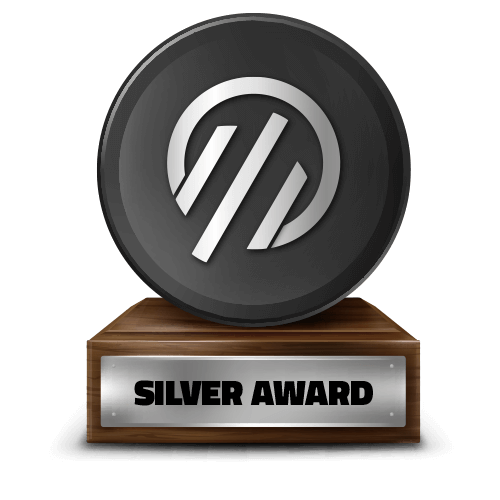
Topping E50 DAC will set you off $269 and its complementary L50 headphone amplifier just $229 and if you get them together as a stack, Apos will throw in a free pair of Apos Flow RCA interconnect cables as an added bonus
Topping E50 and L50 were kindly provided by Apos Audio and you can get can them from their web-store. (Apos offers free shipping in the USA and Canada, free 45-day returns in case you don’t like then, an extra year of warranty and lowest price guarantee).
PROS:
- Small, cute and sleek looking devices
- Great build quality for the price
- Easy integration into crowded spaces, very high WAF
- Fully balanced input to output designs, outstanding I/O
- A full-MQA decoder is on board via USB, that can work as a MQA renderer via Optical and Coaxial
- MQA and Hi-Res logos aren’t laser engraved, but are being provided as stickers (yep, that’s a big plus for me, I’m removing them)
- Extended and linear frequency response
- Outstanding levels of transparency and resolution
- Noise floor is nowhere to be spotted, even with sensitive IEMs
- Fast pace, rhythm and timing
- Good dynamics and decent transient response
- Good imaging, precise pin-point location of the notes
- An above average soundstage size
- Strong headphone amplifier section
- Both units provide a crazy price-performance ratio
CONS:
- L50 can’t drive the hardest loads, higher tiered planar headphones struggled a little bit
- Both units are lacking some impact and bass slam
- Soundstage could be wider
ASSOCIATED EQUIPMENT:
- DACs: Audiobyte HydraVox & HydraZap, Matrix Audio Element X, Gold Note DS-10 Plus & PSU-10 Evo, Musician Aquarius, Topping D90SE, E50, SMSL D1SE
- DAPs: FiiO M11 Plus LTD, M15, Shanling M8, M6 V21
- Headphone Amps: Flux Lab Acoustics Volot, Benchmark HPA4, Burson Soloist 3X, Musician Andromeda, SMSL SP400, Topping A90, L50, Soncoz SGA1, Gustard H16
- Preamps: Musician Monoceros, Benchmark HPA4, Topping PRE90
- Power Amps: Benchmark AHB2 (x2), KECES S300, SMSL SA400, Burson Timekeeper 3i
- Loudspeakers: KEF Reference 3, Sound of Eden Crescendo UNO, Natural Sound NS-17
- IEMs: FiiO FA9, FH7, FH5S, FD7, Meze Rai Penta, Rai Solo, LittleDot Cu KIS, Hiby Crystal 6 & others
- Portable headphones: Sennheiser Momentum 2, Meze 99 Classics, Sony WH1000-XM4
- Full-sized headphones: Hifiman Susvara, HE1000SE, Arya, HE400SE, Audeze LCD-4, Erzetich Phobos 2021, Erzetich Mania, Kennerton Wodan, Magni, Gjallarhorn, Vali, M12S, Ollo S4X Reference, Apos Caspian, Sendy Peacock & Aiva
- Interconnects: QED Reference (x2), Topping TCX1 (x2)
- Speaker cables: Kimber PR8, Audioquest Type4
- Power Cables: Isotek EVO3 Premier (x3)
- Balanced Isolation Power Conditioners: PLiXiR Elite BAC1500 (stereo setup), Elite BAC400 (headphone setup)
